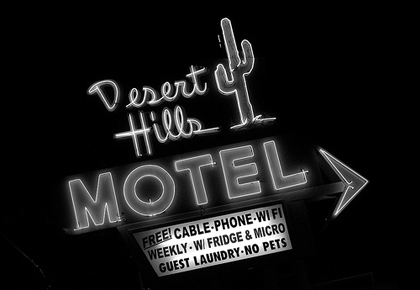
Images source: upgrade:travelbetter.com
With all this Google and spectrum talk swirling the internet and news media, I keep coming back to Wi-Fi as a good way to contextualizing the importance of having open networks and services, as well as open applications and devices. There are of course, many differences which I’ll identify, but the similarities are important and insightful.
Wi-Fi has exploded in the past few years. As with many overnight success stories, this one was twenty-five years in the making. In 1985, FCC opened several bands of high frequency wireless spectrum for unregulated use. This move allowed people to transmit over these frequencies without a license, as you would for radio or television. The spectrum 900MHz, 2.4GHz and 5.8GHz was (in hindsight) amusingly named “garbage bands.” Because they were used by medical equipment and home appliances including microwave ovens, they were considered to have limited telecommunications value.
In 1997, the turning point of Wi-Fi was the adoption of IEEE 802.11 standard by the Institute Electrical and Electronics Engineers, which was nearly ten years in the making. With a standard in place, developers could make devices and applications that were interoperable with each other. Developers chose the 80211b flavor in the first wave of products, because it was least expensive, albeit slow. Faster flavors of the standard, such as 802.11g and 802.11n, are now being developed and brought to market. The early application of 802.11b shows that the agreement on of a standard is just as important as what is agreed upon. As commercial products began rolling out, “Wi-Fi” was settled upon as a term for this new technology, because “IEEE 802.11b compliant” wasn’t as sexy.
Two points to take away from the spread of Wi-Fi concern standards and the open spectrum. First, the adoption of the IEEE 802.11 standard allowed for interoperability. Because products could easily to talk to each other, the chances for wide-spread use increased. Second, providing open spectrum expanded development, because
anyone from the size of Cisco and to the individual members of the Toronto Wireless Users Groups to develop and experiment with Wi-Fi. As well, it vastly expanded its usage by people. (Imagine if everyone who wanted to set up a Wi-Fi network needed to apply and pay for a broadcasting license.)
Wi-Fi will soon face competition from other wireless alternatives, like the results of the 700 MHz auction or WiMax, which is faster and has roughly 100 times wider range. These telecommunications technologies require towers and infrastructure, which have price tags that run in the billions of dollars to implement in the US. Big upfront costs means that big entities are involved like telecoms, industry disruptors like Google or Apple, or governments. Even if the FCC mandated open networks and services (which it did not,) standards and truly fair pricing would remain challenges to seeing levels of innovation and adoption on par with Wi-Fi.
Some good, accessible readings on the topic:
A Brief History of Wi-Fi, Economist, June 10th, 2004. (subscription required)



